Alberta’s oldest grain elevator
Deep in the south west corner of Alberta is the former town of Raley, home to the province’s oldest grain elevator. Built in 1905, this old timer sits along an abandoned rail line. Looking rough and neglected, I doubt many passers by (what few that do pass by) realize the significance of this old weather beaten structure. It’s just an old abandoned grain elevator after all…just like any other…dirty, dusty and infested with birds. That may be true, but knowing that it is the earliest example of the archetypal prairie sentinel left, and that in spite of being forgotten and abandoned, it survives – that’s what makes interesting.
Not only the oldest, it’s also one of a few left standing in the province that are still in Alberta Pacific paint. This company ceased to exist in the 1960s! While the building looked rough, with peeling siding and broken windows (all were broken) and inside there is bird poop everywhere, structurally it seems pretty solid – not that I am any sort of building engineer. The beams seem straight, the joints tight and underneath the base solid. How long however before time and the elements take their toll?
Celebrating it’s 108th year in 2013, this grain elevator sits along an abandoned rail line. This track was the CPR’s Cardston Subdivision, a branch line travelling from a junction at Stirling Alberta, heading west the subdivision’s namesake town and beyond.
Prior to the CPR this track was under the control of the Galt Enterprise’s North Western Coal and Navigation Company (plus successors and subsidiaries) who had a number of railway lines in the region, the main one being between Lethbridge and Dunmore near Medicine Hat.
The Cardston section was built in the early 1900s to tap the vast agricultural potential of the area and was constricted under the charter of the St Mary’s River Railway Company, a “paper” company. Interestingly it was built to the odd and uncommon (in Canada) gauge of 3ft, which all the original Galt lines used. Nearly every other railway in the country was built to standard gauge, or 4′ 8 1/2” and this difference soon lead to many operating problems for the railways. The main challenge was the interchange of freight headed off-line. It had to be transferred from the narrow gauge cars, an expensive and labourious affair.
The Galt Enterprises Lines were leased by the CPR starting in the 1890s and for a time kept some of their identity. Almost right away however, the narrow gauge track was converted to standard gauge, a project that took many, many years to complete. Until 1909 in fact. Complete CPR control did not happen until 1912.
In addition to the Cardston line, there was actually a junction at Raley, with a second line extending south to Kimball. This section was constructed at the same time as the Cardston branch but only lasted a few years before it was abandoned. In the 1920s, the CPR built a new branch south from Raley to Whiskey Gap that used some sections of the old roadbed. This line was abandoned again in the 1970s, and one of the last trains to travel it was a steam train used in the movie “Days of Heaven”.
Like most prairie branch lines, the decades passed by without much changing. The trains came and went and it was a sleepy line, just like most others that relied on grain. Significant amounts of it moved, with most of it coming from some of the larger towns along the line – Raymond, Magrath and Cardston. Raley was never more than a minor shipping point.
As the years past the line suffered from deferred maintenance and train service became unreliable at best. The railways became disenchanted with the money loosing branch lines and did everything in their powers to rid themselves of them – only government regulations kept this from happening faster. The last train passed here around the turn of the twenty first century.
Raley’s grain elevator operated up to the the early 1970s. Built for the Alberta Pacific Grain company, this organization was folded into the Federal Grain Company in the 1960s. Not long after, in 1972, the farmer owned Alberta Wheat Pool bought out Federal’s Alberta operations, including this elevator. Not longer after, it was closed having never been repainted. Afterwards it may have been used for storage by private individuals for a time. The rail siding, while unused for years, remained in place until the line was fully abandoned.
Th annex we see was added in the early 1940s.
Peering inside, we see that some parts of the elevator have been removed, the lifting mechanism and grain pit in particular. Other parts are in place but damaged, like the bucket belt. Stapled to the wall of he elevator are a number of old signs and notices. All the windows seem to be missing and lots of birds can be heard and seen flying about inside.
In addition to this elevator, a number of others stood in Raley. One was demolished in the 1930s – an Alberta Wheat Pool built in the late 1920s, while the other two lasted into the 1970s. No real evidence of them could be found in the tall grass.
It’s likely that Raley was never more than a small village, a tiny dot on the map if you will, easily missed. There was a school and at least a few houses I presume, but it’s unclear if there was ever any stores, hotel or other such businesses. If there was there seems to be no evidence of them. Today, a couple farms are located nearby.
Another grain elevator still in Alberta Pacific colours, also abandoned, is located in Dorothy Alberta in the Red Deer River Valley near Drumheller.
Only two other pre-1910 grain elevators exist in Alberta as of 2013. One is in DeWinton De Winton Dewinton near Calgary (no one seems to agree on the proper spelling of that town) and another up north in St. Alberta.
It’s not clear what the future holds for the province’s oldest elevator. I am not sure if anyone owns it or if its simply abandoned. In any case, it will soon need some TLC or it will succumb to the elements and neglect. Fortunately it seems fairly solid, but how long can it last in this condition? I hope that someone has plans for it.
To see some other grain elevators we’ve visited, follow these links…
Prairie sentinels – Garty Alberta Wilson farm.
Prairie sentinels – Delia Alberta.
Prairie sentinels – Arrowwood Alberta.
If you wish more information about this place, by all means contact us!
Date: June, 2013.
Location: Raley, AB.
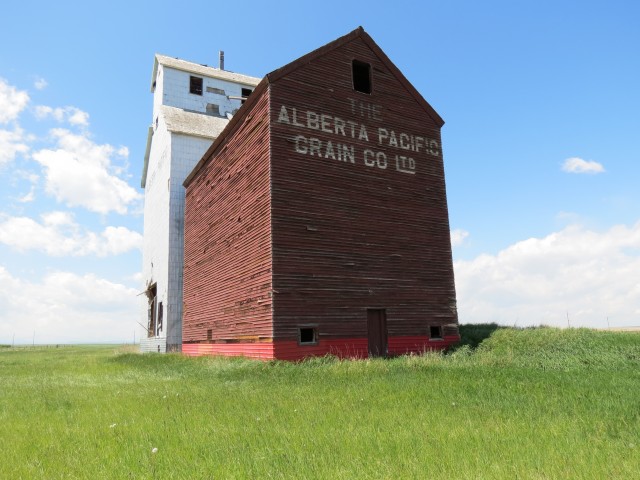
Alberta’s oldest grain elevator, located in Raley.
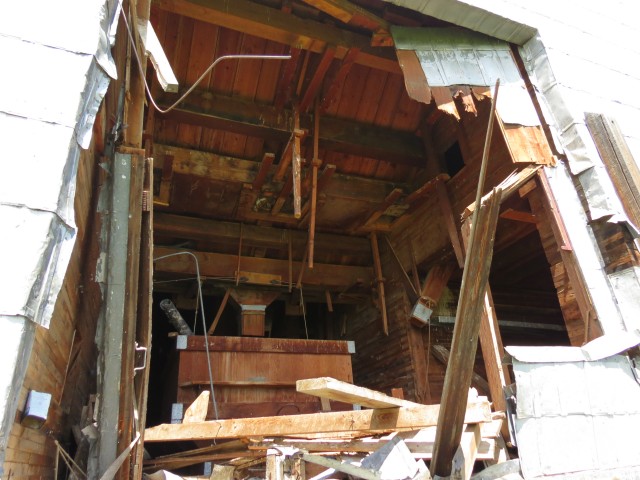
While it looks a bit rough, structurally it seems solid.
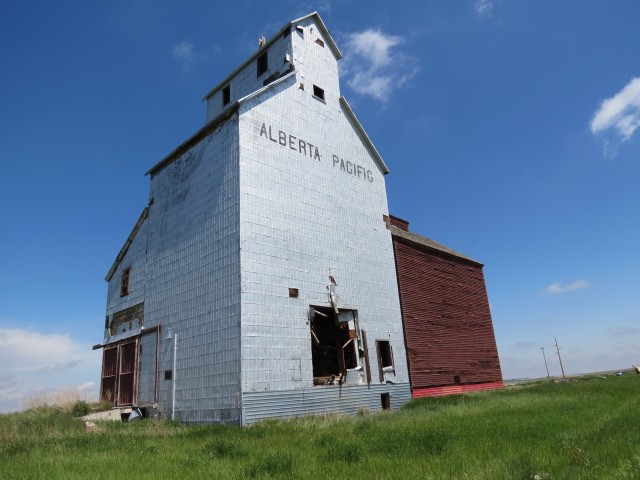
This old-timer dates from 1905.
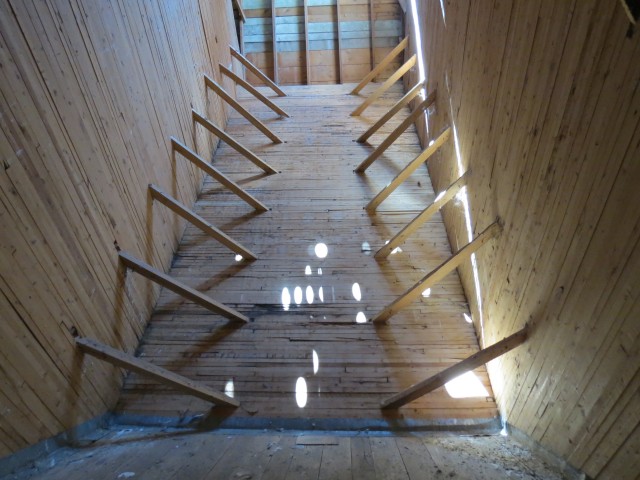
Inside a bin in the annex.
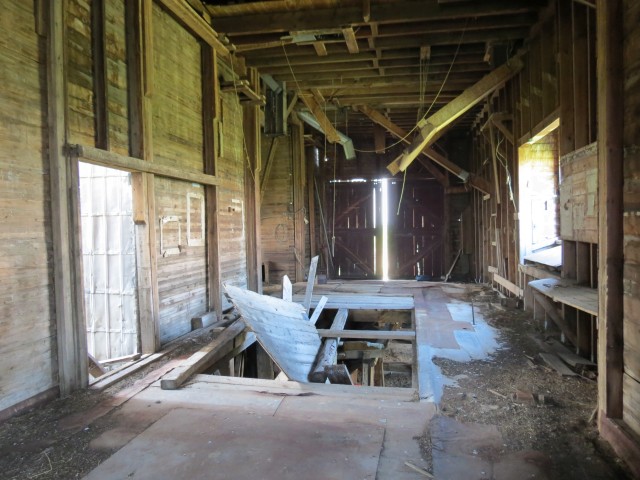
We peer inside.
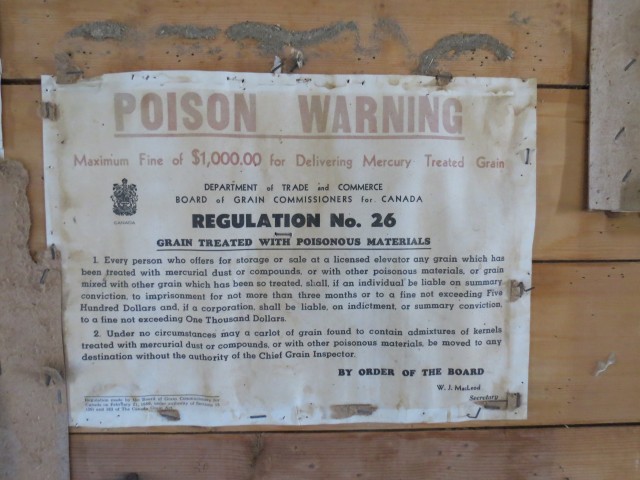
A warning about mercury treated grain.
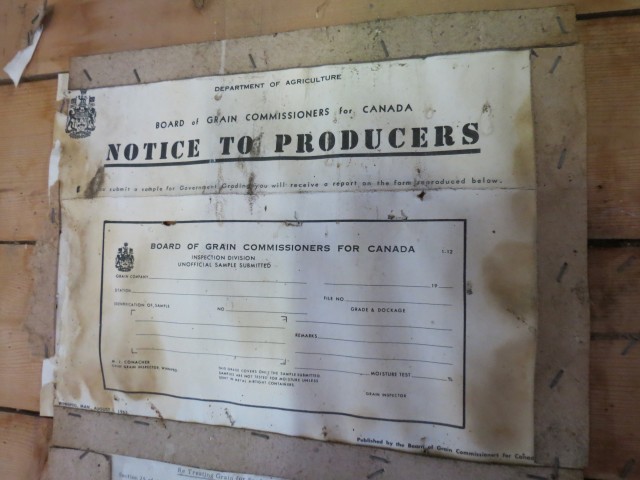
A notice to producers…
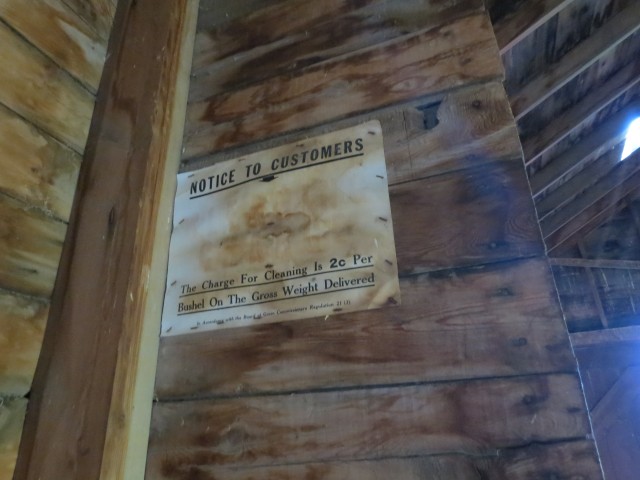
A notice to customers, it’ll cost 0.02c per bushel to clean grain.
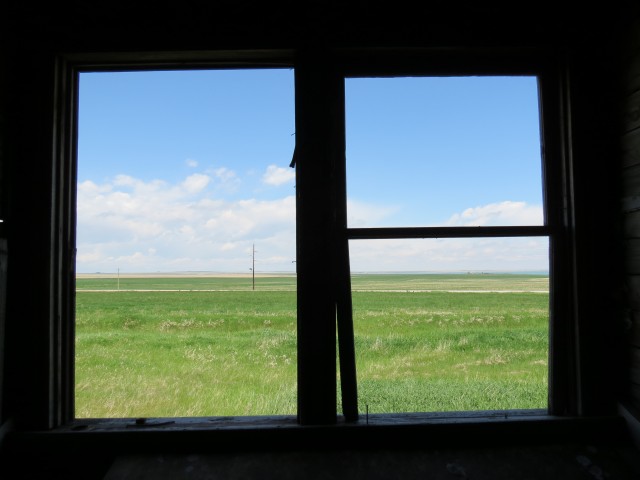
All the windows were broken out.
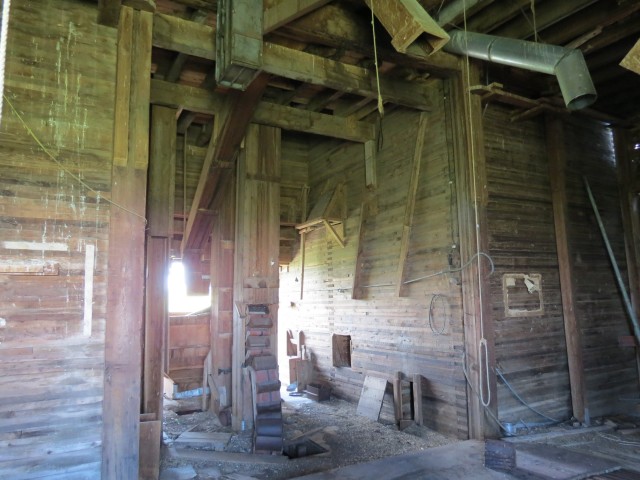
The place was home to lots of birds.
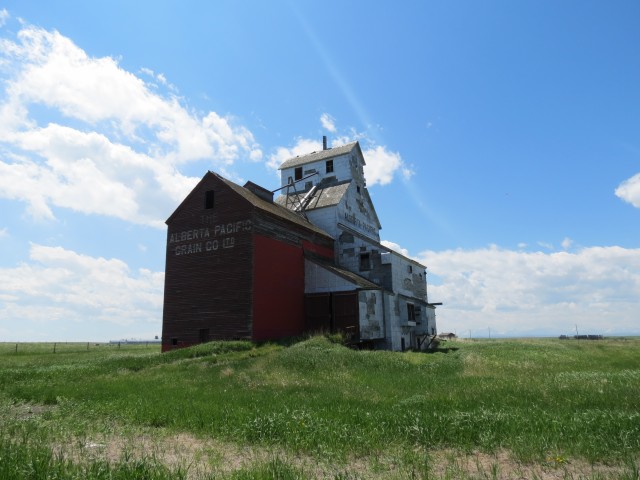
This elevator is one of a few still with Alberta Pacific paint.
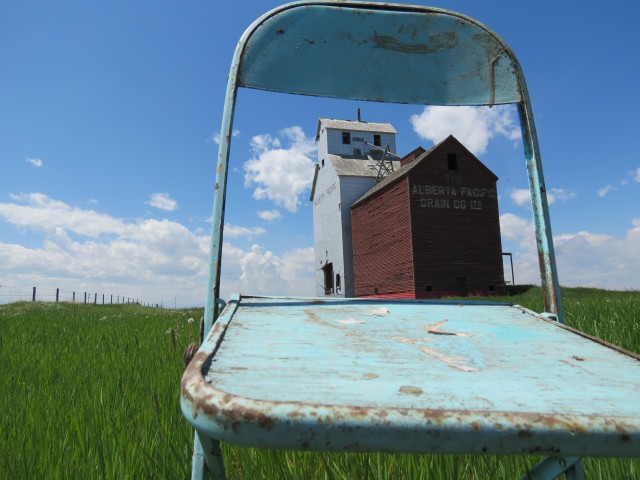
We find an old chair in the grass.
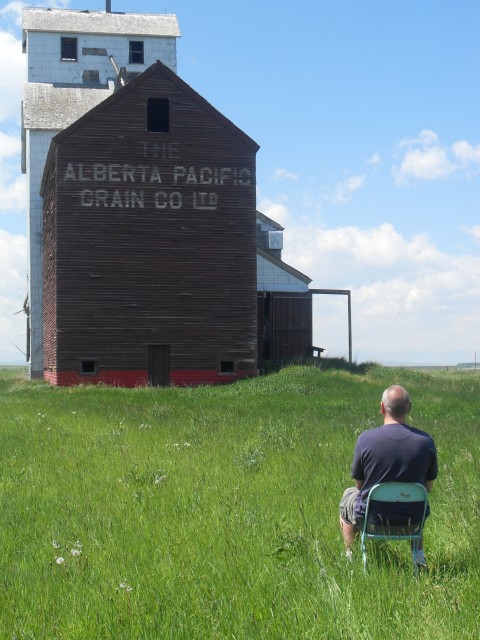
Soaking it all up…

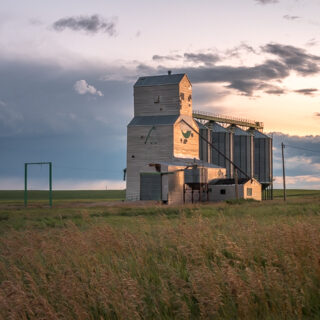
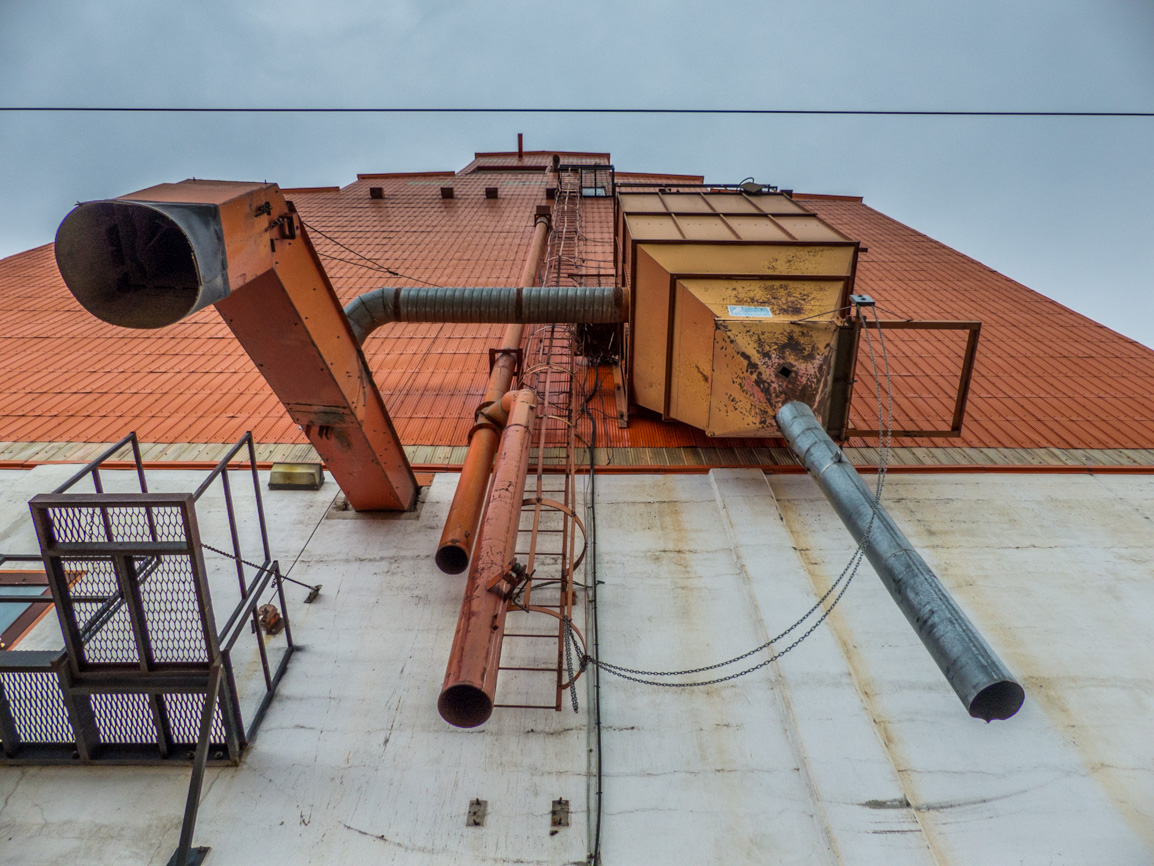
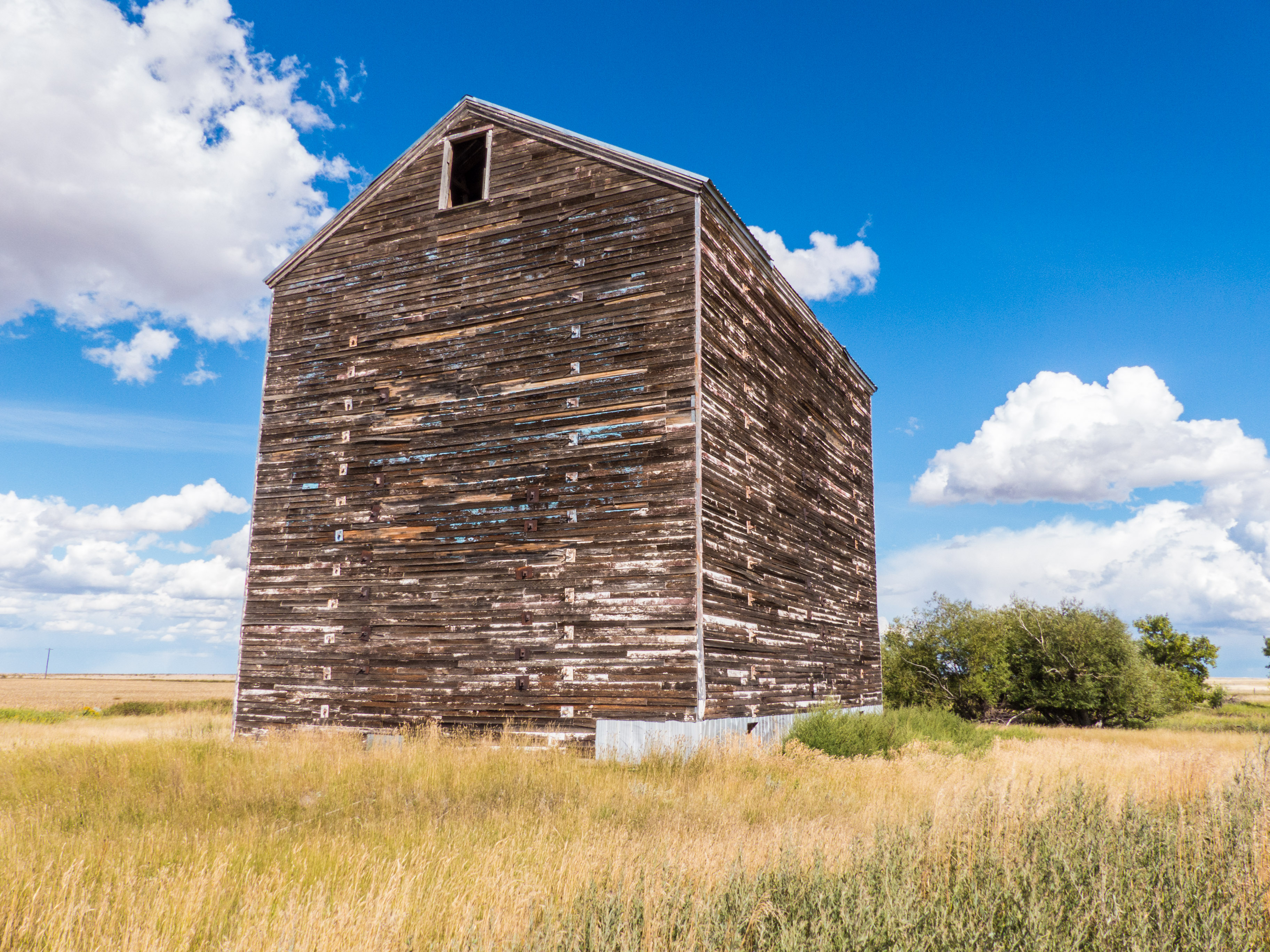
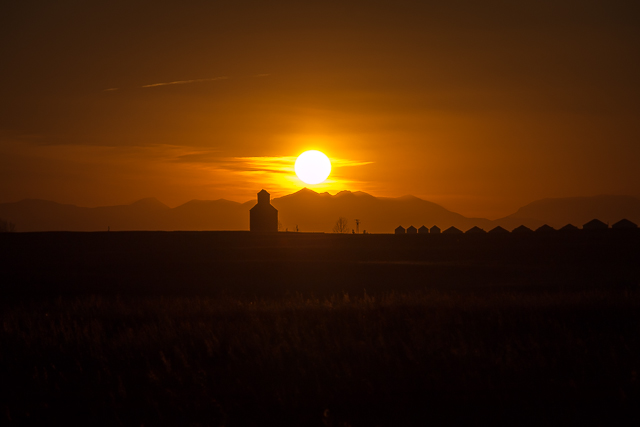
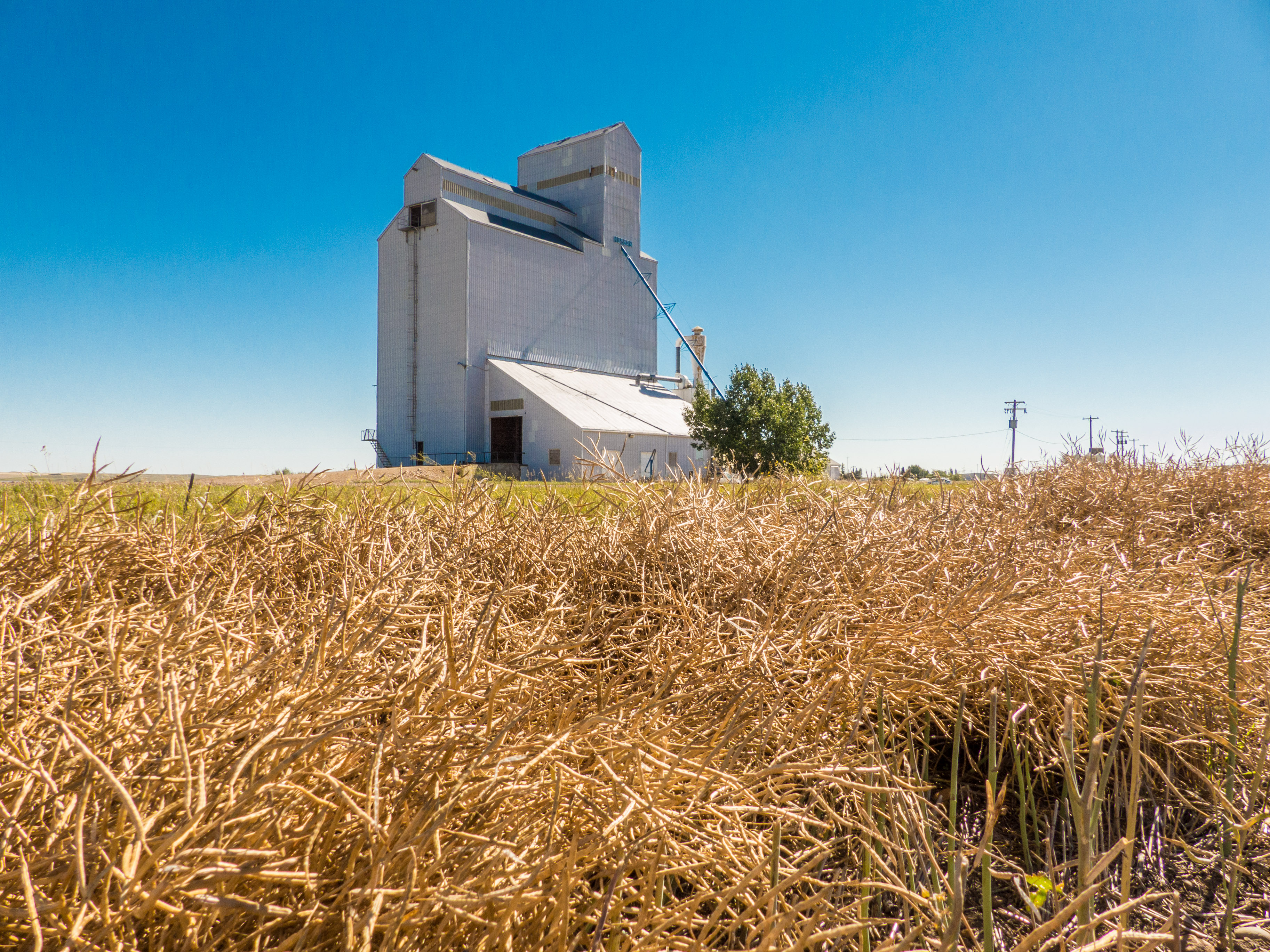
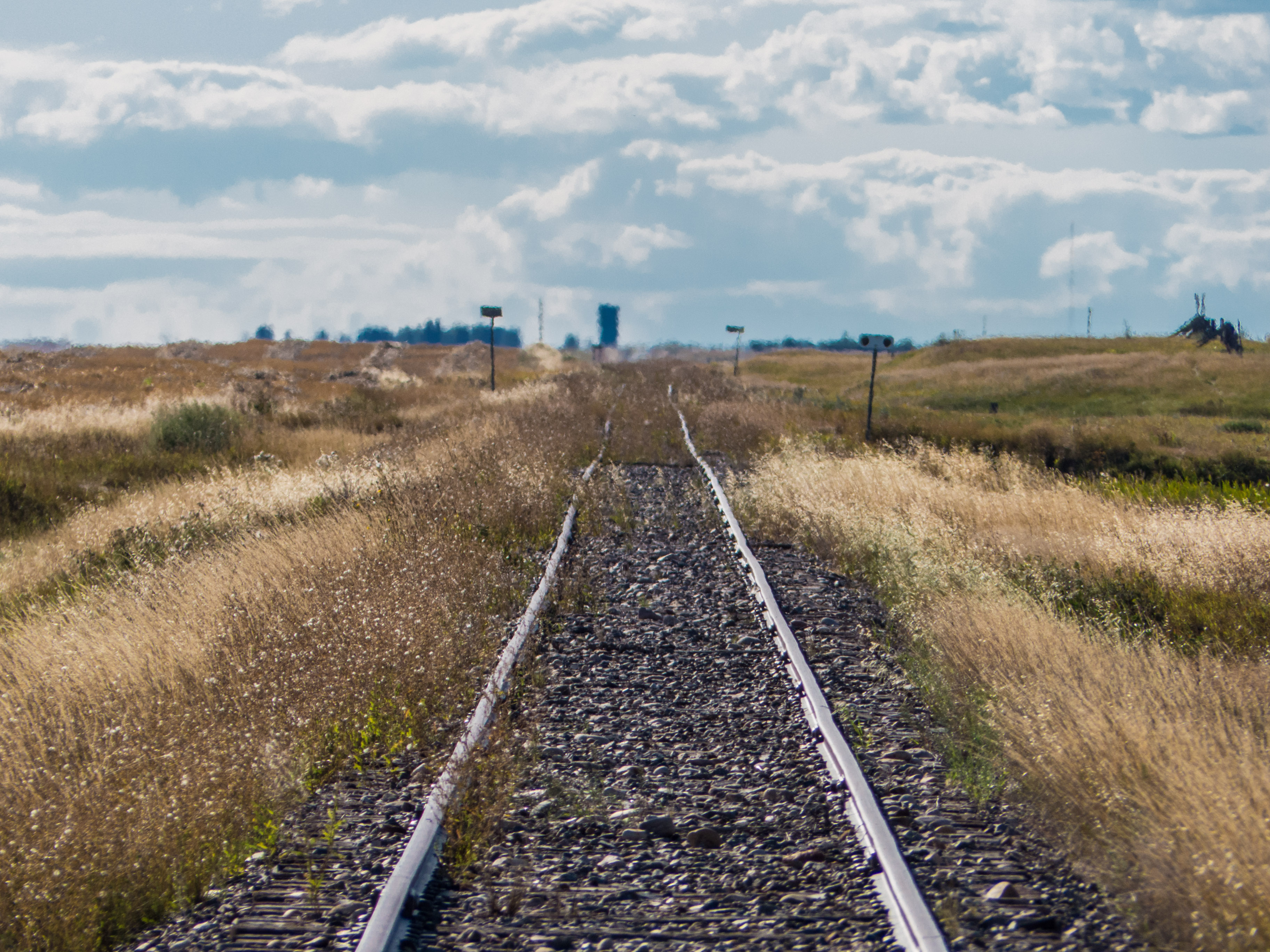
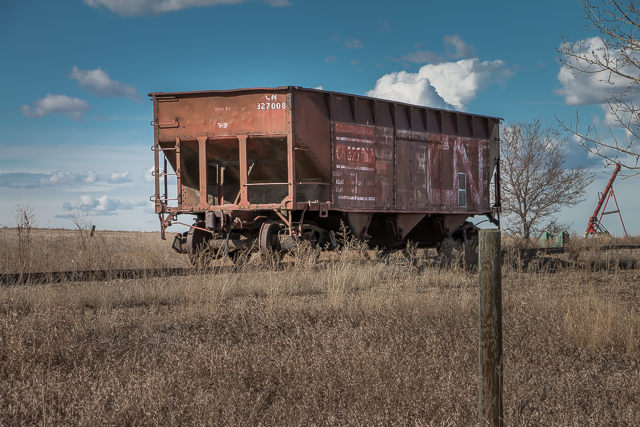
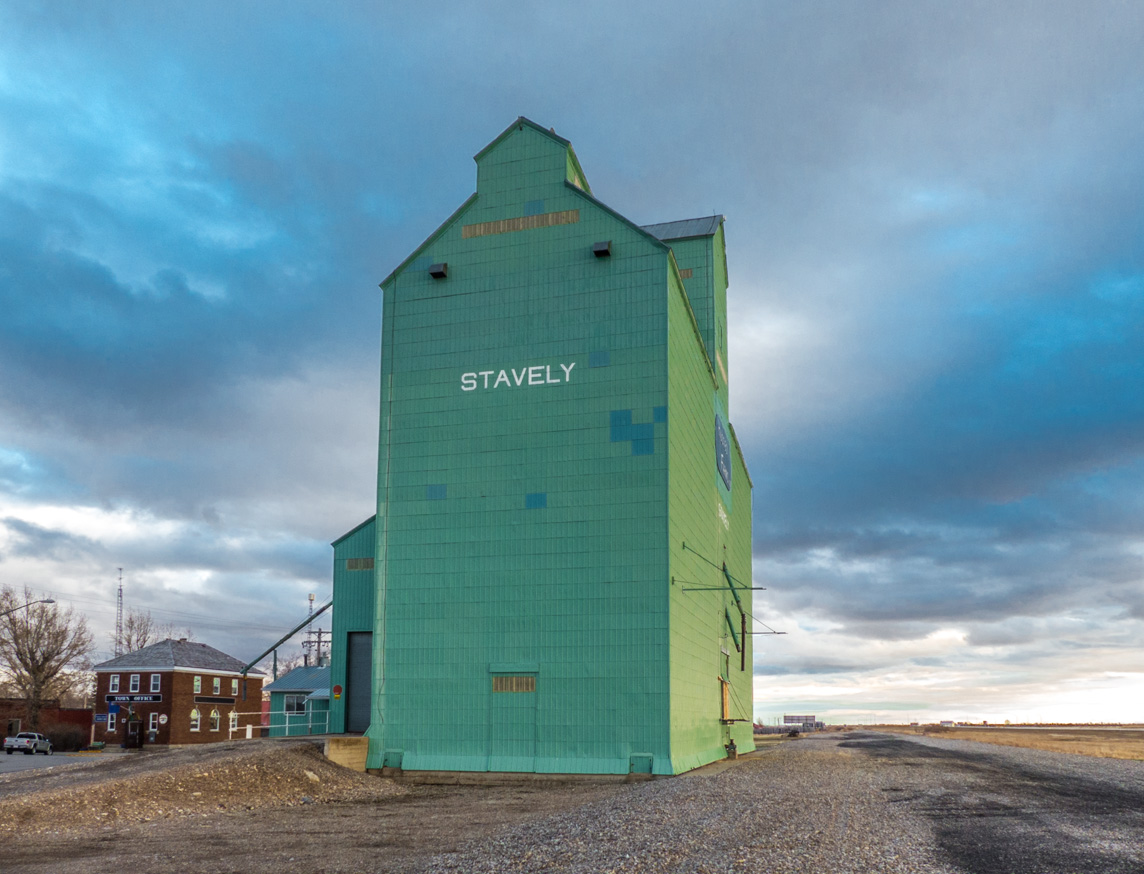
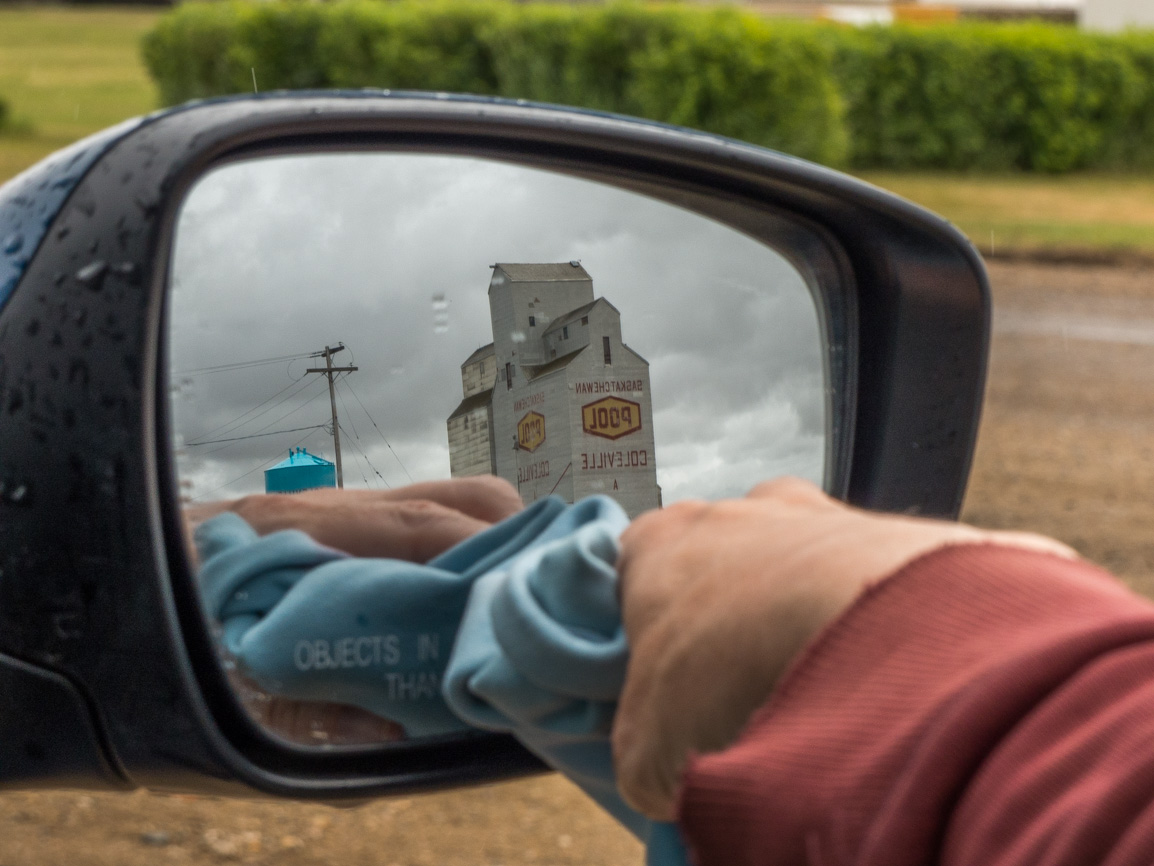
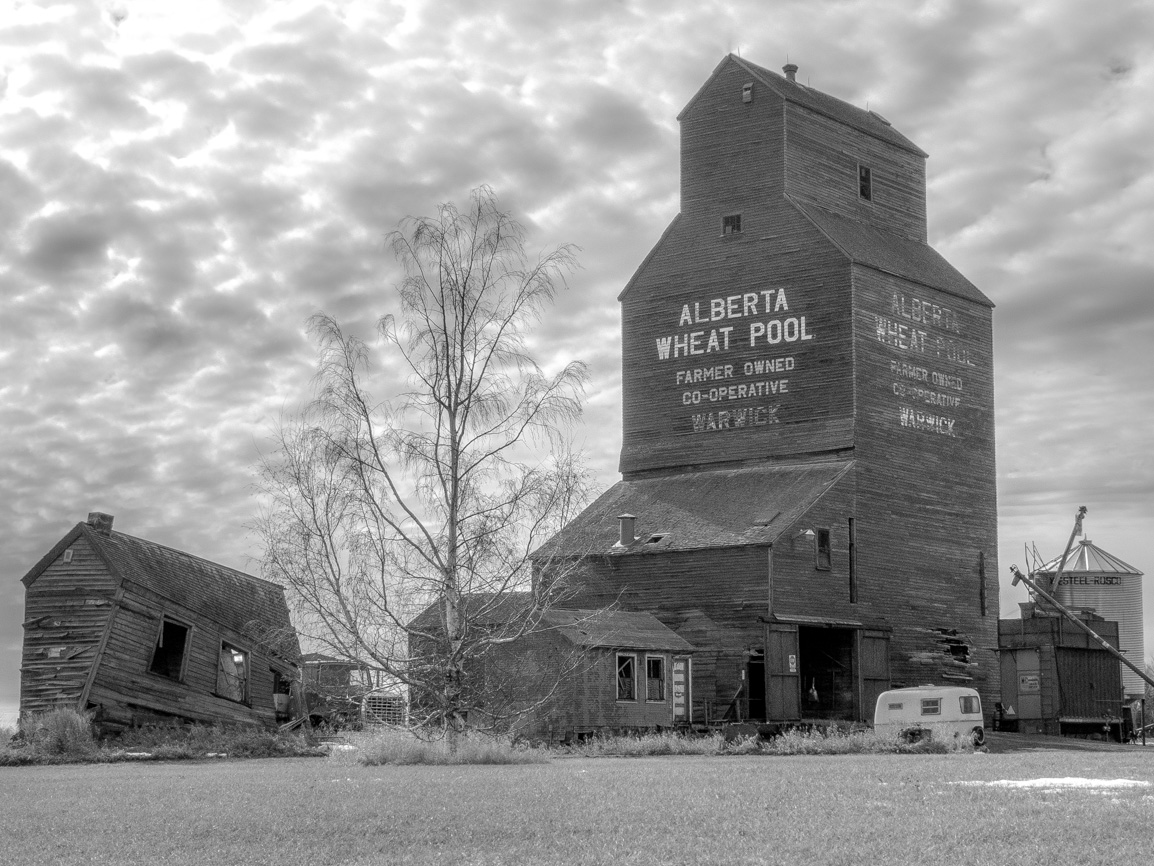
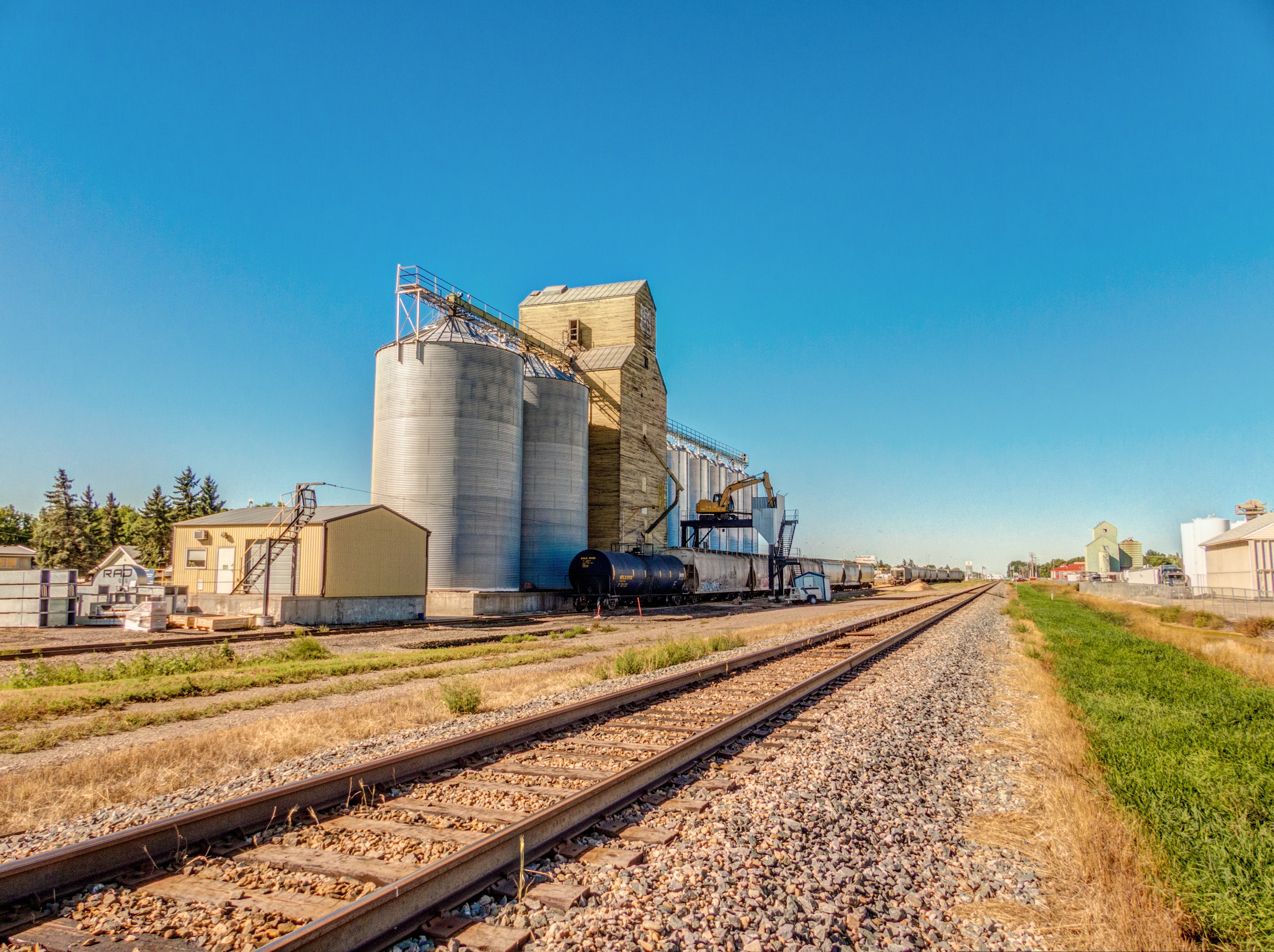
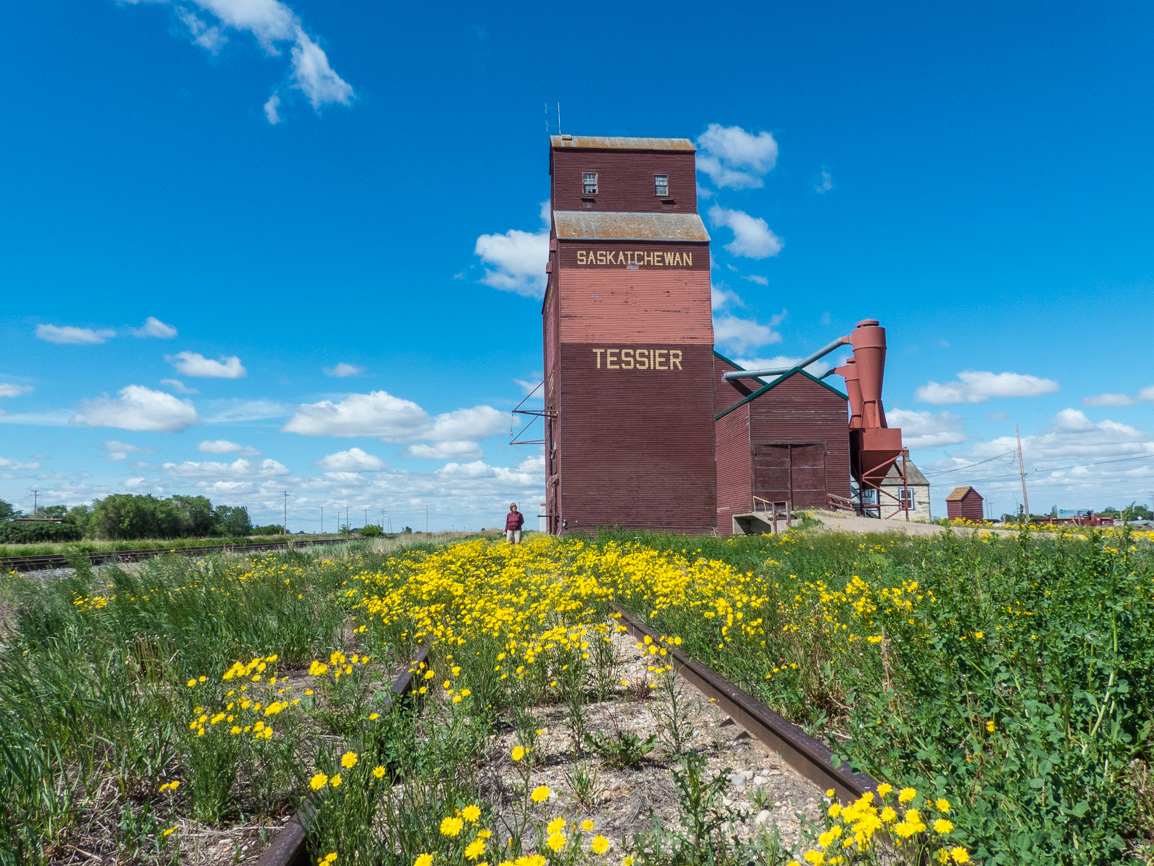







Thank you, very interesting to read the history. I look forward to seeing the grain elevators at Mossleigh when i visit from England later this year. They are iconic and certainly on my bucket list.
Fantastic! You’ll like them.
When was the originally Olglvie grain elevator in Wrentham built? I thot it was pre 1910. My father bought it in early 60’s, and i used it, as recently as 2014.
(Sorry for the delay in approving – we’re just recovering from a huge comment’s system crash.)
It’s a little newer and from the mid-1920s. I think we’ve met your dad too. Here’s a recent tour inside: Ogilvie’s Wrentham.
Hi:
Just wanted to leave a note to say how much I enjoy your website. The knowledge is priceless for those of us who like to explore and take photographs. This prairie girl says thanks.
Marilee
Marilee, thank for you for the kind comment. It made our morning. As we always say, we love what we do. Be sure and drop by often!
The mercury based compound was used by farmers to treat their seed grain. At one time it was manufactured at the old CIL explosives south of Ogden.
Thank for the lesson! Yes, we recall that plant. Remember steamer #6060 being stored there for a time.
The trade name of one of the products was Cersan. I can remember my grandfather using it to treat seed that he had put through his own fanning mill. The fanning mill was run by a belt from a pully on a stationary tractor.
Thanks for this!
The Poison Warning appears to date from 1953. The May 2, 1953 Lethbridge Herald and May 1, 1953 Winnipeg Free Press both reference the wording, and the Manitoba Government Press Release is found here:
https://news.gov.mb.ca/news/archives/1953/05/1953-05-25-delivery_of_mercury-treated_grain_prohibited_by_grain_comissioners.pdf
We’re back. Wow, that’s interesting. Thank you for adding to the story.
Nice photography, thanks for sharing such nice images and information.
You are most welcome – and we love to share! Have a great week!
I miss all those old Grain Elevators. My dad used to work for Pioneer Grain years ago when we where kids. My sister and I used to visit him sometimes on slow days and have a blast talking to some of the farmers. Dad would teach us how to grade grain and show us some of the daily operations it was fun. I miss the smell of the elevator. Just seems like a simpler time back then compared to nowadays with these terminals. Seems like people are just a number nowadays when off loading grain. I miss those days
Amen, miss them all too. Why didn’t I photograph them when I had the chance? Doh! We visited a couple big terminals and agree, they’re cold and sterile in comparison. Very cool story and thanks for sharing!
Thanks for the photos, I remember driving through the area in 1997, getting photos of this elevator, the UGG elevator that was still standing in Glenwood and the spindly wooden trestles across Pinepound Creek near Magrath and Pothole Creek near Spring Coulee. After some searching located the siding of Bradshaw west of Magrath. Of note, according to the 1980 CP Rail Siding Map given to employees, Raley still used the east switch as a stub siding for Imperial Oil Anhydrous Ammonia storage and the west switch for South Alberta CO-OP for the same use. Both were removed around 1986.
I missed a lot of elevators in the 1990s and soon to be pulled up rail lines. Should have been out documenting them but didn’t. I knew of that other industry in Raley but was not sure what they shipped out, other than it was petroleum or chemical related. Thanks for adding to the story.
Do you have photos of them Shane? Be interesting to see them!
If he’s subscribed to his messages, he’ll see this.
Are you referring the elevator pictures, the ‘poor’ bridge pictures or the siding of Bradshaw? I never took pictures of anhydrous ammonia storage facilities, never even entered my mind (duh!).
I’ve sent Jason you’re email as requested.
Based in this article, I ventured out this evening to photograph this landmark. I met the field boss and later a young man running a swather there (also from the colony). Apparently they now own the elevator and they use it to store fertilizer. The young fellow had no idea about its significance so I showed him your article. Hey was quite captivated.
Yes, I was aware the colony had been using the elevator for fertilizer storage. This has been going on for a couple years I guess. They said it worked well, and will continue to use it for the time being at least. Glad the fellow liked the write up. I realize the colony has little sentiment for old things, so that’s a nice surprise. Thanks for commenting!
So neat, I just stumbled upon this now. The elevator is now indeed 110 years old this year! As for the owners, the local Hutterite Colony owns the old elevator although not using the main elevator they are using the old annex building to store fertilizer.
Yes, I saw they were using it. Not a bad looking building, all things considered.
(via Facebook)
I live 2 minutes away from this elevator. Took one of my daughters though it just a few months ago. The Raley hutterite colony owns it now, they still use the annex. Side note, the narrow Guage rail to kimball was never completed. They had less than a mile of track to lay before they abandoned it. It did service the village of Woolford from where they added the whiskey gap line.
I also heard the colony uses it. Hard to imagine that when it was built the track in front was still narrow gauge. Amazing!
Wonderful photos and story. Someday I’d love to see this elevator.
It’s a nice one and so historically significant.
It took 3 years but I finally did visit it!
It’s not how long it’s taken, but that you got there. So glad you did, finally! Such an interesting building, so historically significant, and it deserves all the love we can give it.
Have you ever seen the triple elevators in Inglis, MB? Three right in a row. If I’m not mistaken, they are now protected historical landmarks.
They are on my to-do list and yes they are protected. Inglis has FIVE, one of the longest elevators rows left in Canada.
I remember driving through Alberta and Saskatchewan when I was a kid and these were a common sight. Kinda sad that today there are so few.
It is sad!
Amazing photos!
Thanks, we had fun shooting them!
Haven’t been there for a couple of years now. Great photos!
Take time out to revisit it again, it’s an amazing place.
When we visited in 2011 the chair was inside the annex and there were owls living in the building. We saw them come and go but they were too fast to photograph.
I see that chair gets around! I once saw a pic of those owls too.
Definitely a WOW day. Love the greens, the blues, the reds! Perfect shots!
Thanks, the weather sure was cooperating!
These photos are works of art! Perfect angle and lighting and that sky is breathtaking with the few wispy clouds.
Hi Chris and Connie!
In 2000 a convoy of speeders were allowed to travel the line between Magrath and Cardston. I got to ride with a friend in his Wooding rail car which was an amazing experience. The line by that time seemed abandoned and the tracks showed no signs of use and at many road crossings the flanges were filled up with dirt. We had a CPR truck on rail wheels lead us and they flagged any road crossings. By then the gates and signals had either been removed or deactivated. It’s a very scenic line in places especially the St Mary’s river crossing near Cardston. I remember passing the Raley elevator too! There looked to be some sort of propane dealer, or perhaps a liquid fertilizer operation next to the elevator then and it looks like at one time rail cars delivered their products.
Awesome, thanks for sharing. I Googled it and some photos from that trip can be found! It must have been a hoot! And I bet you got funny looks from people passing by on the roads. I also recall a CPR excursion train travelled the line about that same time. I remember the photos but can’t seem to find them online now.
BTW, for those who don’t know, a speeder is a small rail car used to transport crews or inspectors to remote location along a railway line that are not near any roads. Today, they use modified trucks that can travel equally well on the rails or highway. There are many enthusiasts groups who use these old speeder to travel various rail lines (with permission), mostly ones that are abandoned but not yet pulled up. I see your same group visited the branches to Empress and Lomond as well.
Fantastic shots!! Amazing it’s still standing! Looks like this one is not quite ready to succumb yet! This is really beautiful!!
Thank you!
Such a sad and lonely place.
That’s the feeling we like!